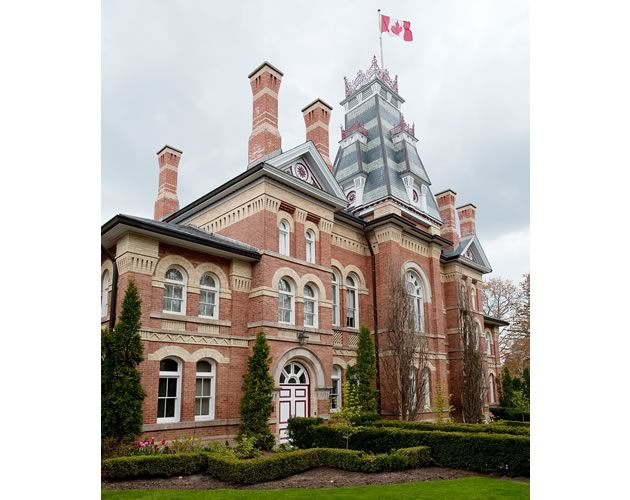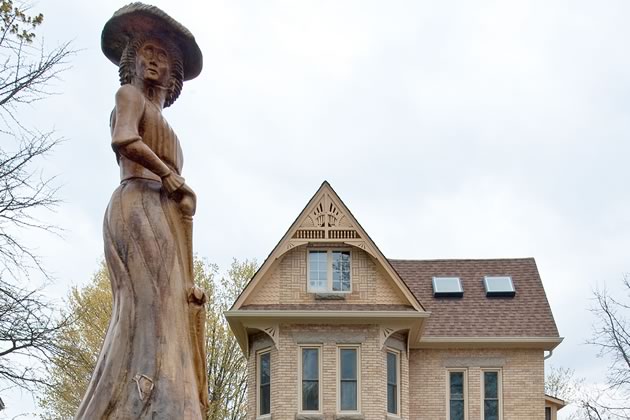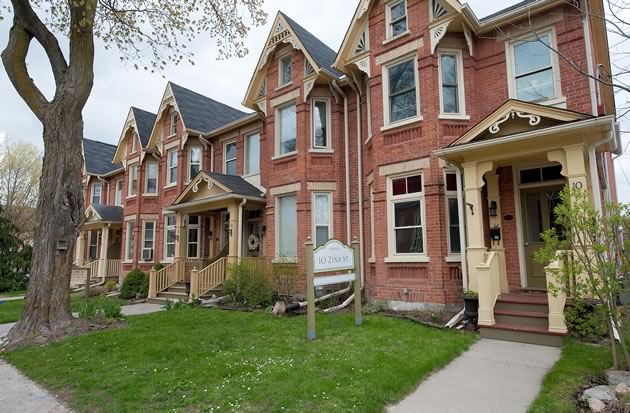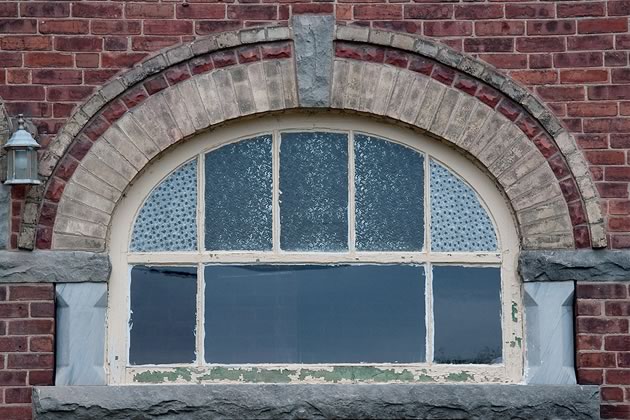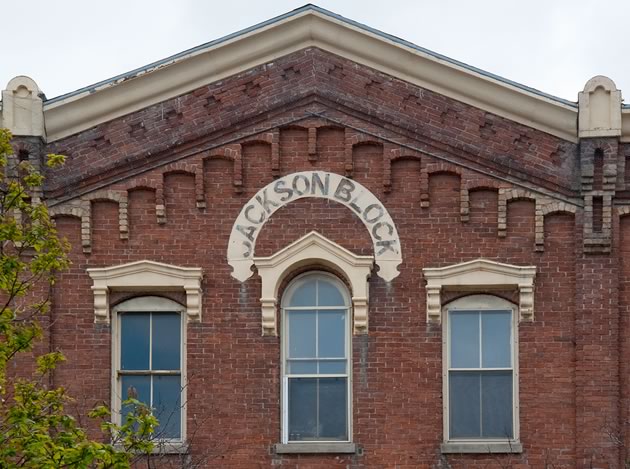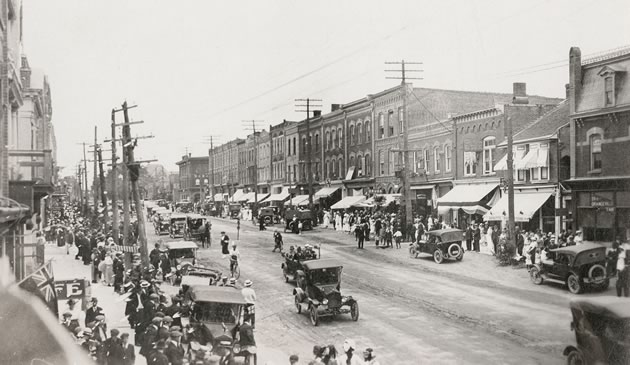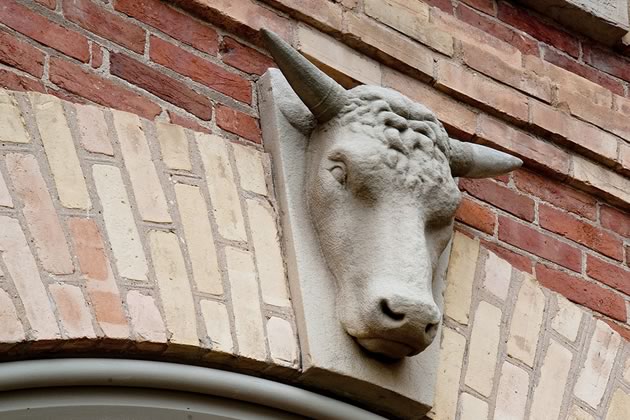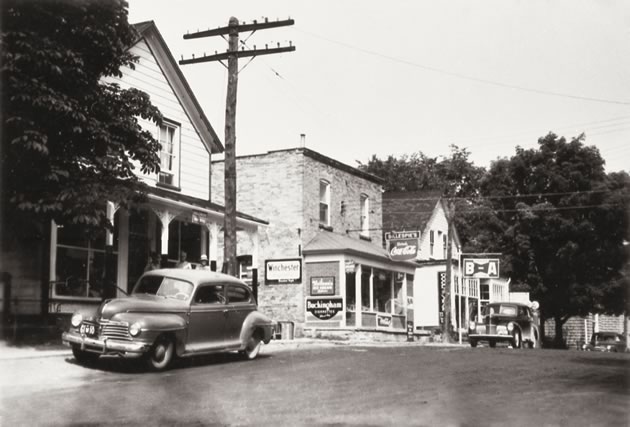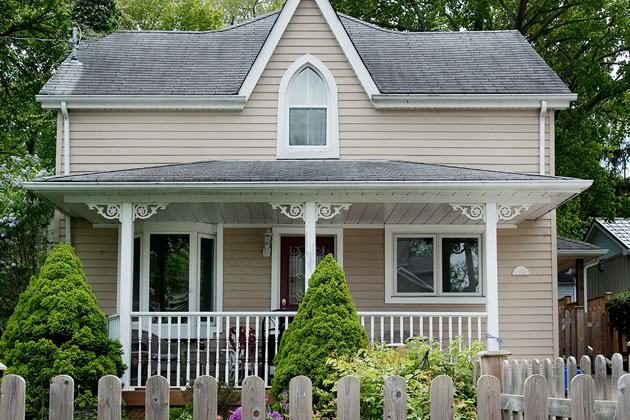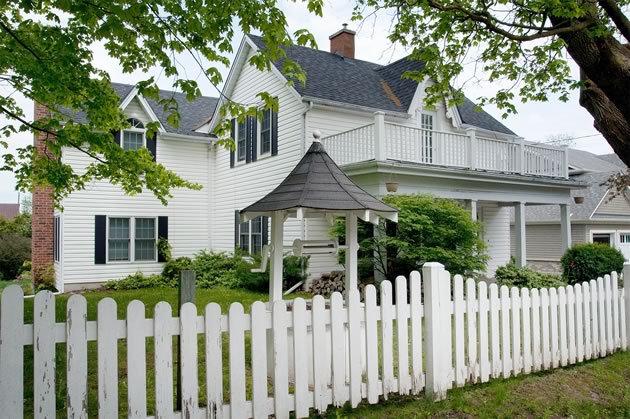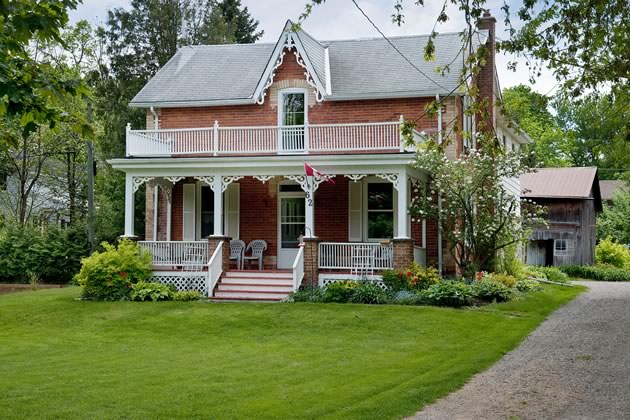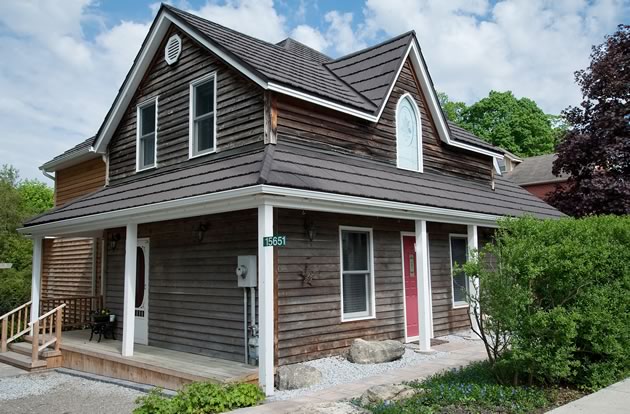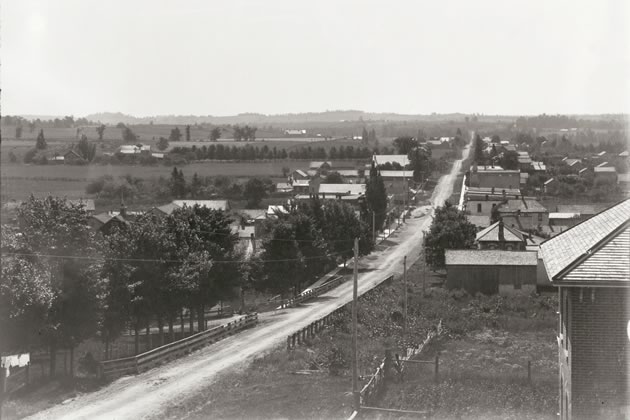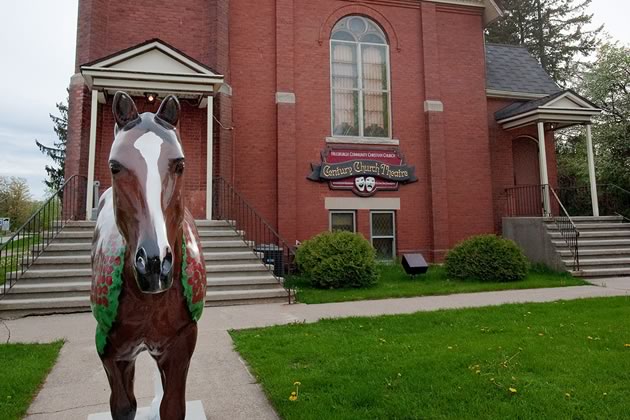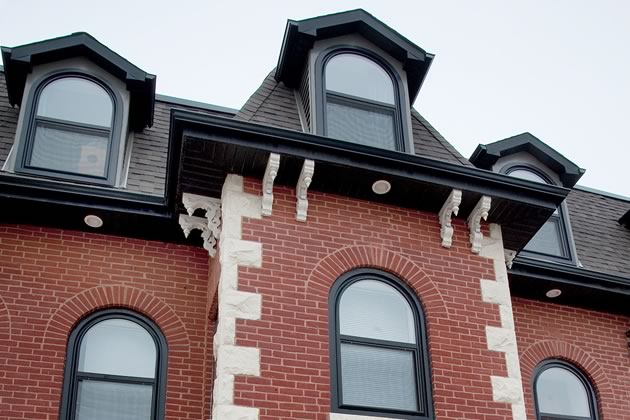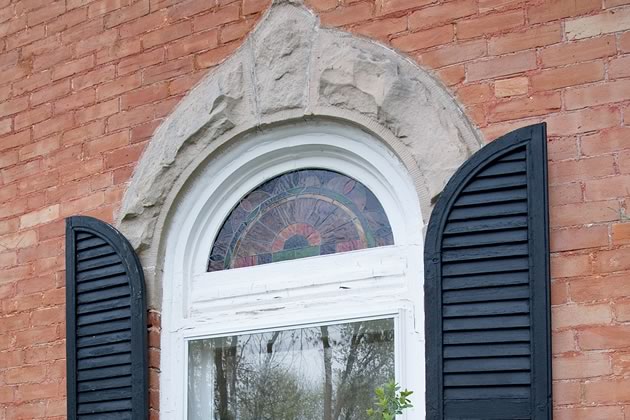Take a Walking Tour of Orangeville, Inglewood or Hillsburgh
Soak up some fascinating local history and stroll the sidewalks of our towns and villages.
The ability to step out and enjoy nature is one of the compelling reasons people choose to live in these hills. We’re lucky that hiking trails aplenty crisscross our fields and forests, and that hiking guides line many of our bookshelves (I’ve written a few myself). But this year, the 150th anniversary of Confederation, may be the time to switch up where you walk for health and pleasure, to think about alternating wooded pathways with the sidewalks of our towns and villages. And to soak up some fascinating local history while you’re at it.
If you’ve vacationed in other cities, you may well have taken a walking tour. Most large centres offer them. In England, for example, London Walks employs 70 guides who lead as many as 22 different tours in a single day. And GPSMYCITY has made a business of its app for self-guided walks in hundreds of cities around the world, including 24 in Canada. In other words, self-guided walking tours, like their guided counterparts, are big business in the tourism world.
But now you don’t have to travel to discover history on foot. Some inspired local historians have taken it upon themselves to show off our bit of southern Ontario. Dufferin County offers three different self-guided walking tours in Orangeville, and another in Shelburne. Folks in Grand Valley are thinking about creating one. In Caledon, Bolton boasts three different tours, and there are tours of Inglewood, Cheltenham, Caledon East, Caledon Village and Terra Cotta. A tour of Alton is nearly ready to go, and one of Belfountain is in progress. Next door to Caledon, both the villages of Erin and Hillsburgh also have walking tours. And to the north Creemore offers a heritage tour of its charming streets.
Though I can’t prove it, this region may take the prize for the most self-guided heritage walking tours per capita in the country. So far I have walked three of them. Here are my reviews.
Orangeville ~ Rich in stories
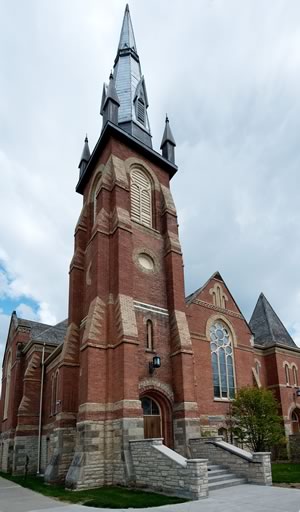
The soaring spire of Westminster United Church draws the eye toward the heavens. Photo by Rosemary Hasner / Black Dog Creative Arts.
Created by Heritage Orangeville, the town’s three tours can be downloaded to your smartphone, but I suggest picking up the full-colour, 66-page booklet available at Orangeville Tourism. It’s a good size, the type is large, and it’s printed on heavy stock so pages don’t blow in the wind. Moreover, the spiral binding lets the pages lie flat. The designers of this booklet knew what they were doing.
Each walk is calculated to last about 30 minutes, though it took me the better part of an hour despite the bitterly cold, overcast weather. This says a lot for the tour and in no way suggests the organizers mistimed the route.
The initiative to develop these routes was part of Orangeville’s sesquicentennial in 2013. Incorporated in 1863 as a village, Orangeville officially came into being just before Confederation. This fact is part of the historical overview that sets the stage for the tours. I read it before setting off and am glad I did. I chose the Booming Broadway Tour rather than the Founders Tour and the Prosperous Years Tour. Starting at the Town Hall Opera House, the tour took me down and then back up Orangeville’s wide main drag. As I learned from the booklet, Broadway is indeed a “broad way” – one-and-a-half times the width of a typical street.
I’m a map person, so I found the one at the back of the booklet really helpful. But even for those not so inclined, the tour is easy to follow and the length of the write-up for each building was about right for a cold April day. Had it been a sunny June afternoon, though, I might have been happy to have a bit more information than was provided.
As a bonus, for those who don’t know a dormer from a lintel, or a cupola from a quoin, the booklet contains a glossary of architectural terms. The booklet’s authors refer to a variety of building styles ranging from Gothic Revival to Italianate to Romanesque, and they too are defined.
The information I found most memorable were the little observations, the quirky details that made me believe I’ve come to know Orangeville like a local – maybe even better than a local. In any case, I now have some intriguing tidbits with which to impress visiting friends. It will be fun to point out the steer heads that adorn the lintels on the old market wing of the town hall and to explain that the library was originally funded by the Carnegie Foundation.
I also loved the historic photos included for comparison with how the buildings look today. Most drastic is what has become of the Orangeville Dairy and Dairy Bar at 5 First Street, now the home of Liberty Tax Service. As the booklet says, this building is (was) a “rare example of Art Moderne.” The historic photo made me want to buy it and return it to its original glory.
Inglewood ~ Caledon’s Prettiest Village
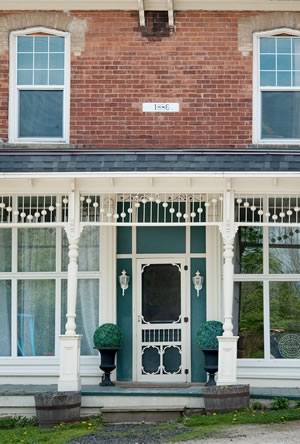
Decorative spool work trims the veranda of a former general store. Photo by Rosemary Hasner / Black Dog Creative Arts.
The Inglewood tour is one in a series of historic walking tours Heritage Caledon initiated to celebrate the town’s 40th anniversary in 2016. You can download all the Caledon tours to your smartphone if you prefer, but you’ll need your reading glasses.
The Inglewood tour brochure includes a short write-up for about 25 different stops, most of them houses. Though not as highly produced as Orangeville’s booklet, it also provides an overview of the village’s history and some definitions of architectural terms.
As I followed the route with the spring sun warming my back, I was struck by how beautiful Inglewood is. If you don’t live in this village of about 1,000 residents, a small percentage of whom live in the historic centre, or even if you do, you may seldom if ever have travelled its backstreets.
Lorne and McKenzie streets are lined with simple, lovely Ontario homes with tidy gardens and trim lawns. As the overview explains, many of the houses in Inglewood were built from local lumber planed nearby at the William Thompson Planing Mill, as wood was more economical than brick. The wood homes are lovely, but the scarcity of brick houses led me to conclude Inglewood must have been a working-class village in its early years.
Six of the Lorne Street houses highlighted on the tour share a local design. “These cottages,” says the guide, “usually featured a front verandah, a centre door symmetrically flanked by windows and a steep roof line with a front gable surrounding a Gothic or arched window.” Once you read the description, those features, especially the Gothic (pointed on top) or arched windows, begin to jump out at you. I began spotting similar designs throughout Caledon and beyond. These simple features were a vernacular style widely known as Rural Gothic or Carpenter’s Gothic.
The tour also made me aware of how self-sufficient the village had once been. In the late 1800s, it boasted “several general stores, a blacksmith, a livery and wagon maker’s shop, a butcher shop, a bakery, a general hardware and tinsmith business, a barber shop, glove factory, post office, library, and a branch office of the Northern Crown Bank.”
As you wander along Inglewood’s wide, well-treed streets, the guide will tell you which building housed what business and which pioneer operated it. All in all, it was an intriguing insight into what I believe is Caledon’s prettiest village.
Hillsburgh ~ A hidden gem
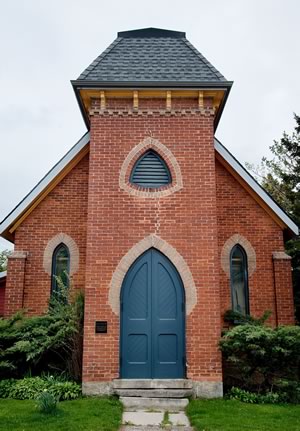
The former St. John’s Anglican Church in Hillsburgh displays features typical of Victorian Gothic Revival architecture. Photo by Rosemary Hasner / Black Dog Creative Arts.
If my ex-brother-in-law hadn’t grown up in Hillsburgh, where his parents owned the general store (sadly, torn down years ago), I’m not sure I would know where this village is. Despite being home to great butter tarts, as well as the upscale Friendly Chef and Butcher Furniture, Hillsburgh is definitely a hidden gem. So it was with particular interest I headed out on a one-hour walking tour of the town of Erin’s second-largest village. In my hand I clasped a two-page brochure created by Erin’s trails and heritage committees.
The tour begins in front of a lovely brick church near the south end of Hillsburgh’s main street, aka Trafalgar Road. Built in 1906 as the Christian Disciples Church, the building now houses Century Church Theatre. From there I walked west to the Station Street bridge. (A question: Why can’t bridges today be built with even a smidgeon of the character of these century-old relics?)
This brought me to what turned out to be my favourite part of the route. It’s here on this backstreet that Hillsburgh’s history comes to life. Who knew there was a local connection to Gooderham & Worts, whose wonderful 19th-century distilling complex in Toronto has been transformed into the historic Distillery District? The company, once the largest distiller in Canada, bought land here in the late 1800s and built a dam, gristmill, sawmill and cooperage. So for a time, at least some of Gooderham & Worts’ whisky barrels were manufactured in Hillsburgh.
Millponds flank both sides of Station Street. The upper millpond to the north is enormous. It was alive with ducks, geese and other waterfowl when I was there late last fall. I followed a short section of the Elora Cataract Trailway (part of the Great Trail, formerly the Trans Canada Trail). The trailway follows the line laid down more than a hundred years ago by the Credit Valley Railway Company. Hillsburgh is known for its potatoes and many a spud made its way to consumers via these railway tracks.
Before it was removed, Hillsburgh’s train station was located in this area, and I wondered if one of the nearby brick homes might have housed the stationmaster. The most impressive brick house on this great backstreet is at number 9. Built in 1892 this gracious building was once a home complete with a bandshell, wharf and cider press. Today it’s being converted into what will be one of the most beautiful and well-situated rural libraries in the country.
If it’s true brick houses were more expensive to build than wooden ones, then Hillsburgh was clearly a wealthy town in its day. The main street is lined on both sides with red brick churches, homes and commercial buildings. And if a single structure can provide proof of a town’s prosperous past, then the Exchange Hotel, located across from present-day Foodland, does that for Hillsburgh. A large inn, it had a livery stable that was reached through the archway. For years, the Caledon Mountain Trout Club was headquartered in the hotel. The club used Hillsburgh’s ponds to raise trout to stock its own ponds. Renovated in 2012, the old hotel now has commercial and residential space.
The joy of these walking tours is the way they connect us so physically with our history. While most of us walk with our eyes focused straight ahead, the tours encourage us to look around and up, and to see details. They persuade us off the main drag to explore the backstreets in the same way hiking gets us off the highway and into the forests and meadows. I grew up in Belfountain, and until relatively recently I didn’t even know Inglewood and Cheltenham had backstreets! These walks help us get up close and personal with our towns and villages. In doing so they deepen our bonds with the place we call home.
More Info
Food & Façades
Enjoy a taste, literally, of Orangeville and its history on Saturday, August 12 when Dufferin museum curator Sarah Robinson and archivist Laura Camillieri lead tours and share fascinating stories and photos of old Broadway, stopping for beverages and appetizers at three restaurants en route. The 90-minute tours are at 2 and 4 p.m. Tickets are $20. Call 1-877-941-7787 to reserve.



